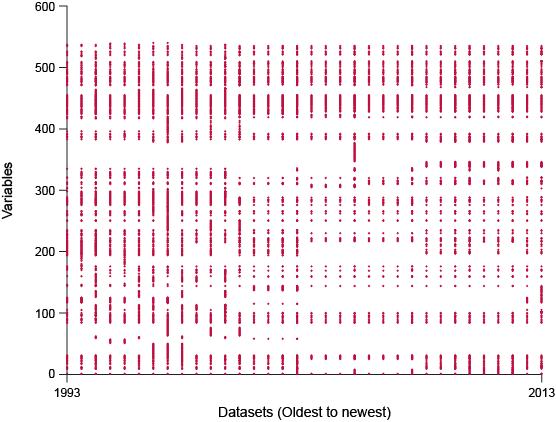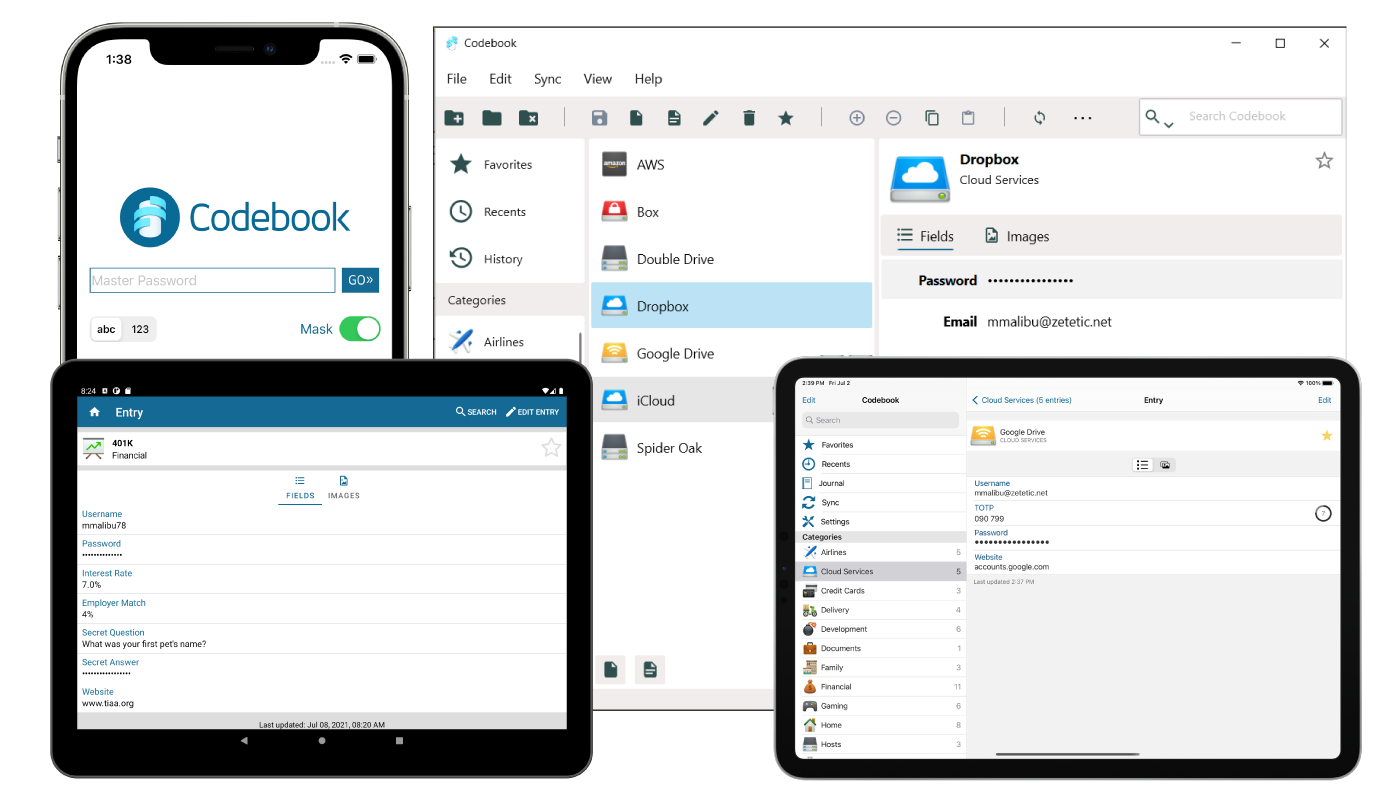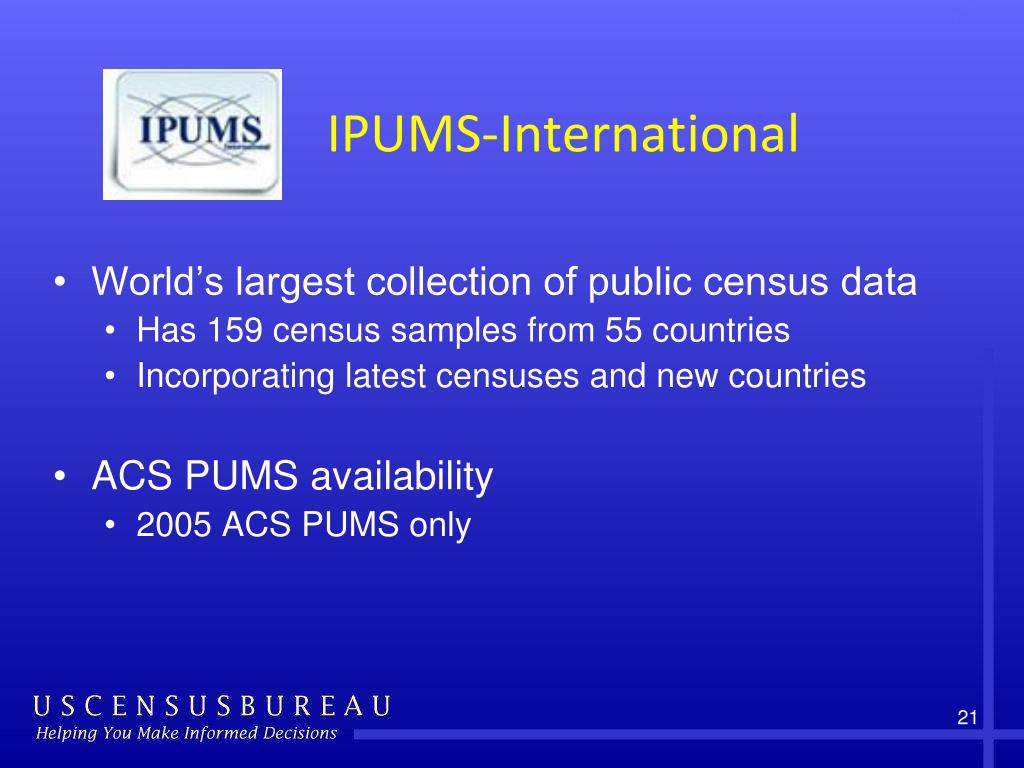


How do IPUMS data differ from public samples that may already be in distribution? Ī limited number of the IPUMS-International samples are also distributed by national statistical offices through alternative means. Users who require official census results should consult web pages of the National Census Offices. Imputations and adjustments to the official figures by the National Census Office that are not encoded in the microdata files provided to IPUMS. (usually documented by a flag on the sample selection page)Ħ. Omission of areas of the country due to loss of microdata, lack of coverage, security concerns, etc. Omission of special populations, such as homeless, collective dwellings, or other non-private households (usually documented on sample description pages).ĥ. Measures to safe-guard the privacy and confidentiality of individuals, households and other entities, can introduce error in the samples.Ĥ. This introduces a slight bias in estimating statistics for individuals - greater bias for characteristics more commonly shared by households members (ethnicity, religion, birthplace) than by individuals (age, sex, marital status).ģ. The IPUMS sample unit is usually the household. IPUMS microdata are samples, not the full-count data.Ģ. There are a number of reasons why the IPUMS sample data may yield different counts from official census results:ġ. Why do frequencies for IPUMS samples sometimes differ from official results? Please inform us if you have any presentations or publications using IPUMS data. To be successful, we need to have a large body of users and published works we can point to. We have every expectation of continuing the project indefinitely, but will have to secure further funding as our current grants expire. National Science Foundation and National Institutes of Health. IPUMS-International is funded by a grants from the U.S. What's in the future for IPUMS-International? Scholars interested only in the United States are better served using IPUMS-USA, which is optimized for U.S.

IPUMS-International is very similar to the IPUMS-USA data system, which contains all national-level samples of the United States from 1850 to the present. A data extraction system enables users to select only the samples and variables they require. Because the data are individuals and not tables, researchers must use a statistical package to analyze the millions of records in the database. In most samples persons are organized into households, making it possible to study the characteristics of people in the context of their families or other co-residents. Each record is a person, with all characteristics numerically coded. IPUMS is not a collection of compiled statistics it is composed of microdata. This "integration" process is described more fully here. The variables have been given consistent codes and have been documented to enable cross-national and cross-temporal comparisons. Names and other identifying information have been removed. The data are samples from population censuses from around the world taken since 1960. IPUMS-International (Integrated Public Use Microdata Series, International) is the world's largest collection of publicly available individual-level census data. General information about the project What is IPUMS-International? Why are some variables in my data cart preselected?Įxtract option: Standardize monetary values Using the data extract system Your data cart Using the variables page Variables page menu What is the difference between spatially-harmonized and year-specific geography variables? Where are the data?Ĭan I find particular individuals in the IPUMS data? There were questions asked in the census for which I don't see variables in IPUMS-International. What are the major limitations of the data?Ĭan I study multiple countries? One country? Using IPUMS data Are there tricky aspects of IPUMS data to be particularly aware of? Is there a preferred statistical package for using the IPUMS? How does "sample selection" work on the IPUMS-International web site? What if the samples are too big for me to handle? What is the best way to use the extract system? What does "universe" mean in the variable descriptions? What are "general" and "detailed" versions of variables? How do I get access to IPUMS-International data? Getting started Where should a new user start? How do IPUMS data differ from public samples that may already be in distribution?ĭoes IPUMS-International add value to the data?


 0 kommentar(er)
0 kommentar(er)
